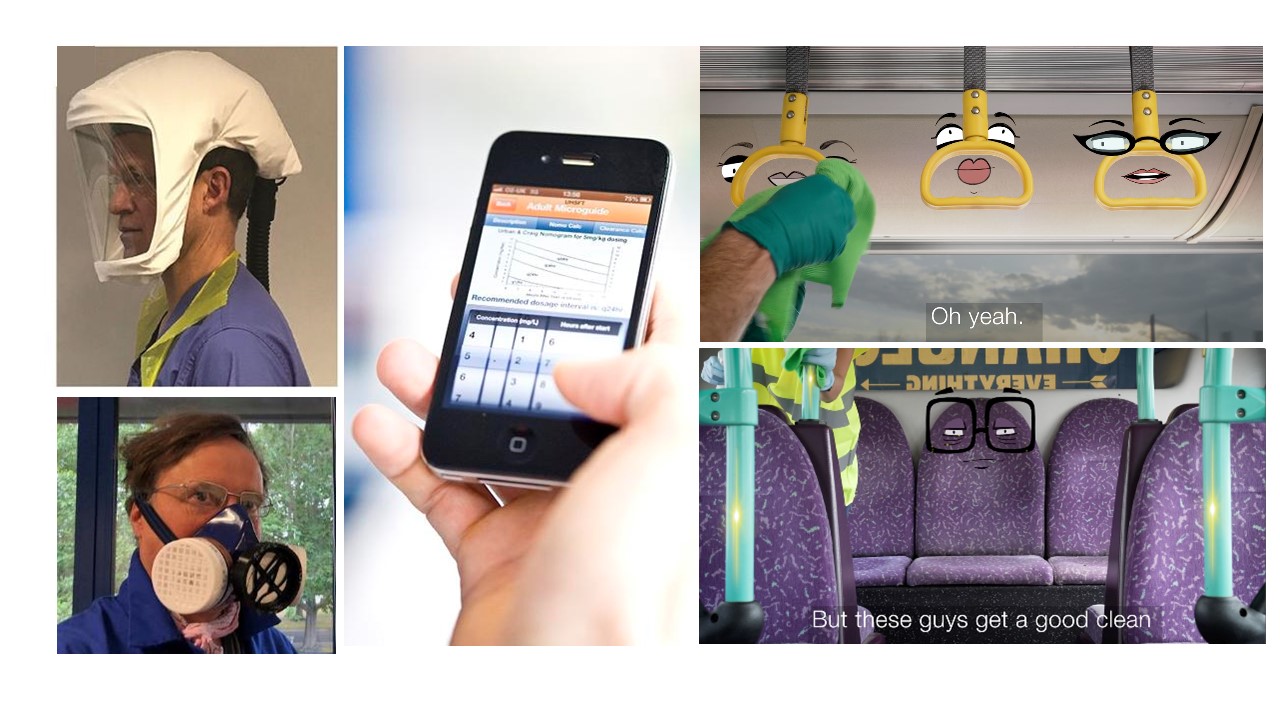NAMRIP's 2020 early pandemic work featured in National Health Executive NHE Magazine

As the COVID-19 pandemic kicked off in 2019, members of Global-NAMRIP were quick off the mark to undertake a number of projects, according to the latest issue of the National Health Executive (NHE) Magazine.
NHE magazine heard about NAMRIP's efforts and invited Professor Leighton to tell them about how NAMRIP members used their distinct fast-response cross-disciplinary working methods, to address projects at a time when little was known about the virus or the routes by which it spread. NAMRIP's goal was to fill the 1-2 year gap expected before pharmaceutical companies could provide vaccines, to provide measures by which the public and workforce might be kept safe in the interim.
At the time, the relative importance of airborne and touch surface routes for infection was unknown, with an emphasis from Government on infection prevention by washing hands and purchases. Resources (e.g. PPE) quickly became scarce, yet the workforce (especially in health and social care, food production, retail, delivery and waste displosal) needed protection. Suppliers could not keep up with existing orders. There was a huge need for reliable rapid testing for infection, which did not exist at that time.
This environment created difficult challenges that suited the characteristics of NAMRIP: quick-response, user-orientation solutions from cross-disciplinary teams, generating:
- the PerSO hoods that provided full-face PPE protection with a filtered air supply (designed used and well-received in University Hospitals Southampton, with 135 hood shipped to Ethiopia);
- prior to the pandemic, the highly successful Germ Defence website was the only website worldwide provide to reduce infections in the home; in April 2020 the Germ Defence team released an update on COVID-19, which was quickly translated to 27 languages and used in 173 countries;
- an extension of the highly successful Mapping Microbes project to convey to the public awareness of infection routes (e.g. on public transport), which included bringing together corporate, government and public stakeholders together, and publishing the consequences;
- plans (downloaded hundreds of times) for 3D printed parts to convert a standard builder's respirator mask into one more suitable for infection prevent in the COVID-19 pandemic;
- prototypes of ultrasonic water taps that hospital, carehome, food production and manufacturing (and eventually domestic) environments can use to better clean hands, food, packaging etc.
- researching a suite of candidate testing technologies (at a time when none were available to the public) including nose and throat swab tests, finger-prick blood tests; antibody tests were trialled; and the use of laser-technology to write channel border in lateral flow tests.
- MicroGuide, the very sucessful phone-based app to assist prescribing decisions, was already in use in the NHS prior to the pandemic (licenced to over 70 NHS acute Trusts); during its early days, MicroGuide flagged the resurgence of anitbiotic-resistant pathograns such as C.difficile in some UK hsopitals as a result of the inappropriate use of antibiotics in the early days of the pandemic.
- two Public Health surveys in 2020, one for a UK population (recording behaviours people undertook, what symptoms they experienced, and what they did if they became infected), and one for teenagers in Low- and Middle-Income Countries (recording how the pandemic was affecting the lives, mental health and wellbeing, and eating habits and physical activity behaviours of young people living in both rural and urban settings across sub-Saharan Africa and India).
The article is available to download from here, with the citation:
Leighton, T. G. (2022) Early multidisciplinary research during the 2020 lockdown. National Health Executive NHE Magazine (March / April 2022) pp 72-76.